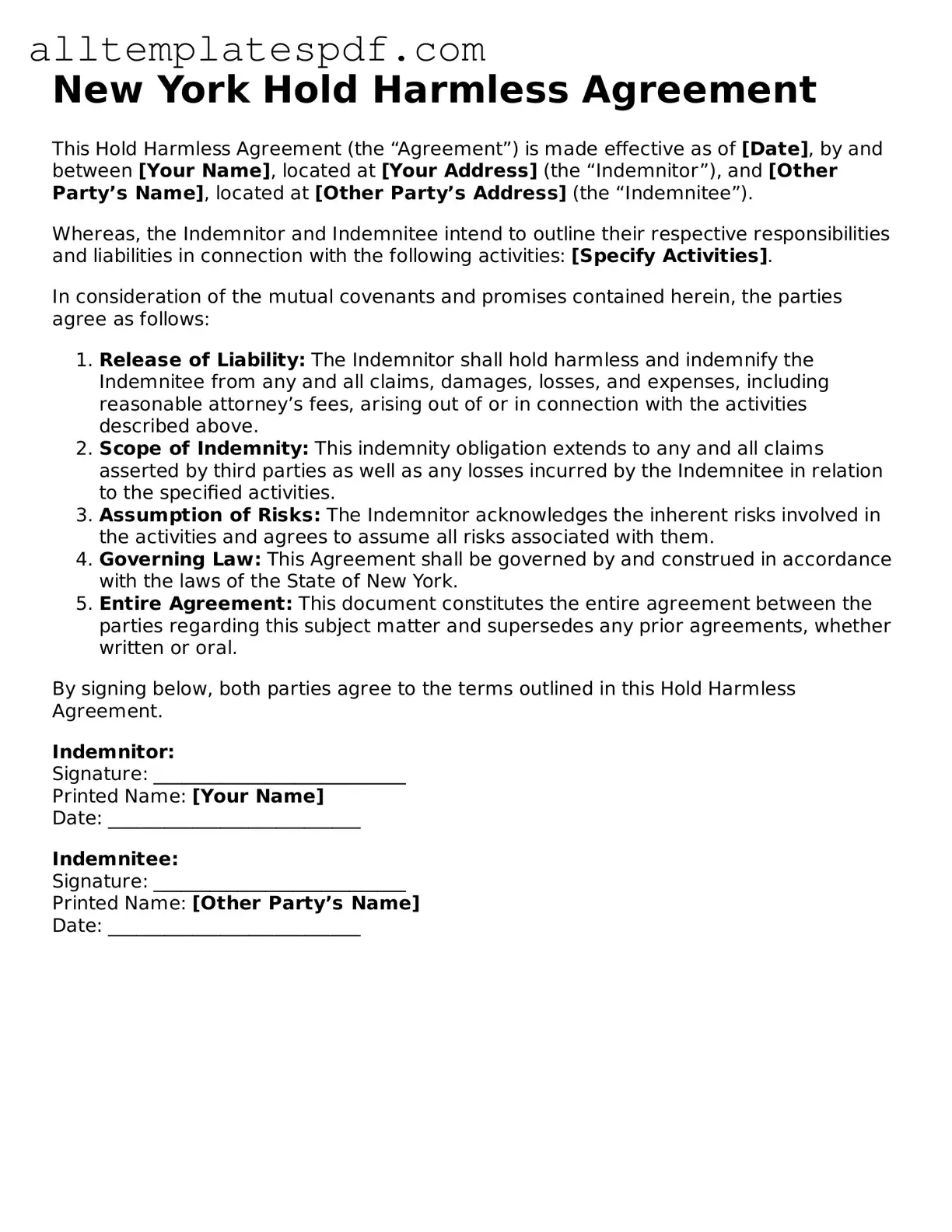When filling out a New York Hold Harmless Agreement form, individuals often make several common mistakes that can lead to misunderstandings or even legal complications. One of the most frequent errors is failing to read the entire document thoroughly. This oversight can result in signing away rights or obligations that one may not fully comprehend. It’s essential to take the time to understand each clause before agreeing to it.
Another common mistake is neglecting to provide accurate information. Whether it’s personal details or specifics about the event or activity, inaccuracies can undermine the validity of the agreement. For example, if a person lists the wrong date or location, it could create confusion about the terms of the agreement and lead to disputes later on.
People also frequently overlook the importance of including all relevant parties in the agreement. If the form only names one individual or entity, but others are involved in the activity, those omitted parties may not be protected under the agreement. It’s crucial to ensure that everyone who could potentially be liable is included to avoid gaps in coverage.
Moreover, failing to understand the implications of the agreement can be a significant pitfall. Many signers may not realize that a Hold Harmless Agreement typically waives their right to sue for negligence. This lack of awareness can lead to regret if an incident occurs, leaving individuals feeling trapped by their own signature.
Another mistake is not having the agreement properly witnessed or notarized when required. Some situations may necessitate a witness to validate the agreement. Without this step, the enforceability of the document could be questioned, potentially rendering it ineffective in a legal context.
Additionally, individuals often forget to keep a copy of the signed agreement for their records. This oversight can create challenges if disputes arise later. Having a personal copy ensures that all parties can reference the terms as needed, providing clarity and support if disagreements occur.
Lastly, many people fail to seek legal advice before signing the agreement. Consulting with a lawyer can provide valuable insights and help clarify any confusing aspects of the document. Legal counsel can ensure that individuals fully understand their rights and obligations, ultimately leading to more informed decision-making.
